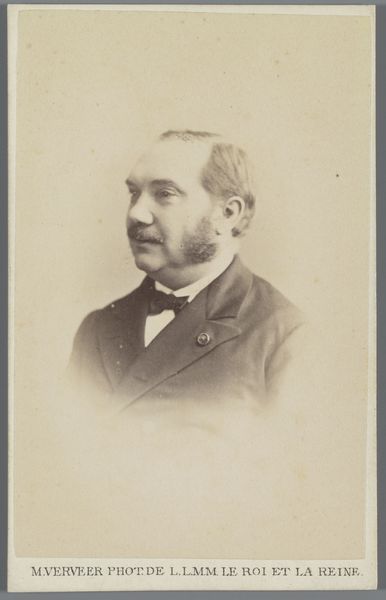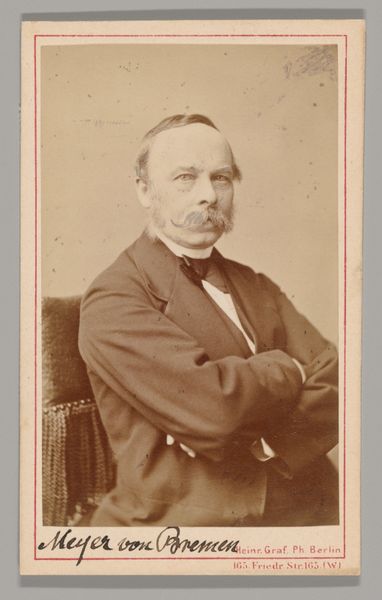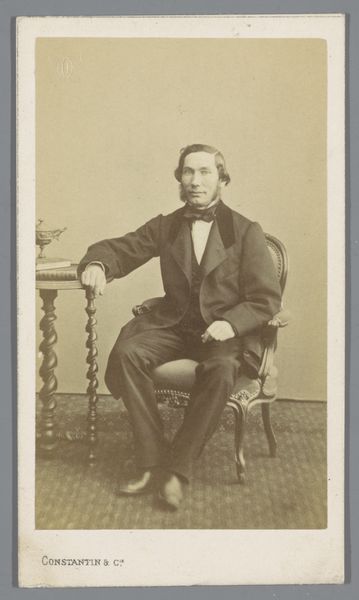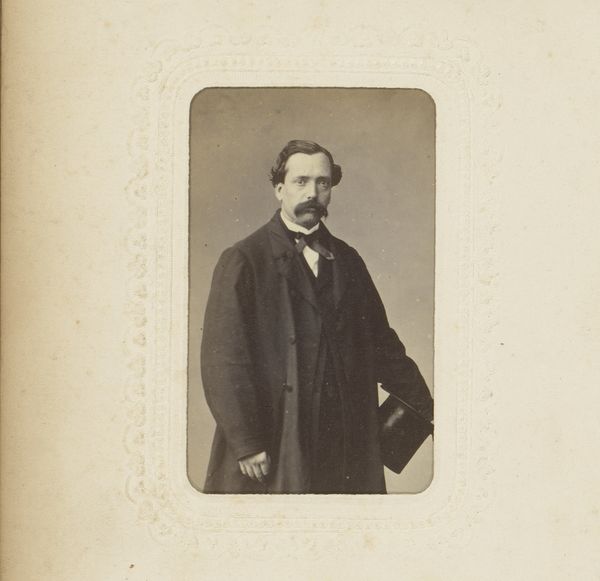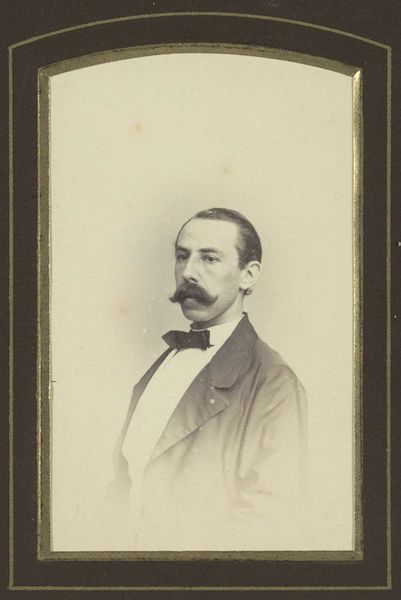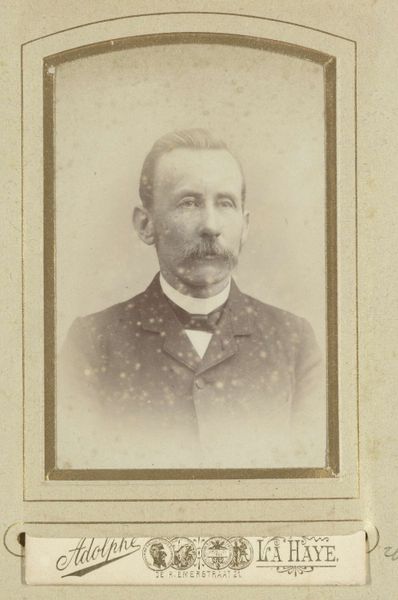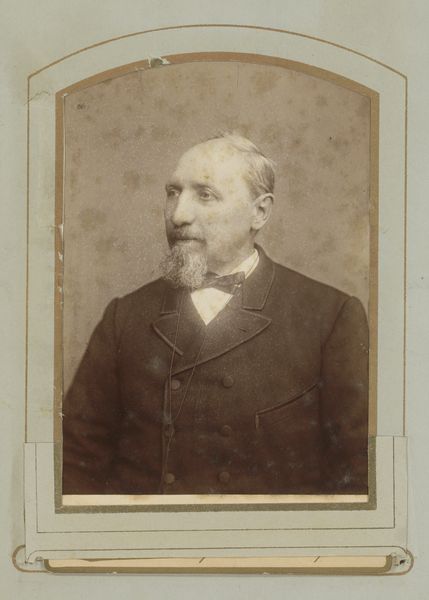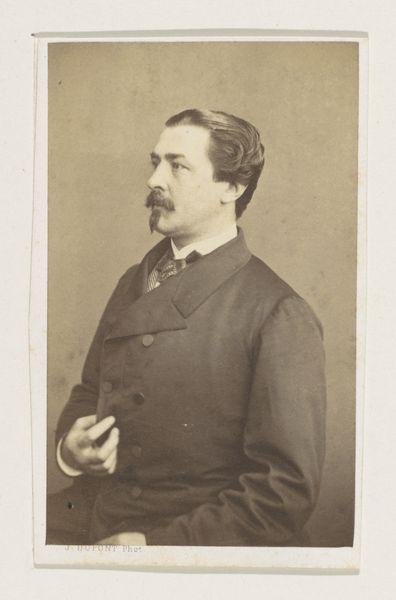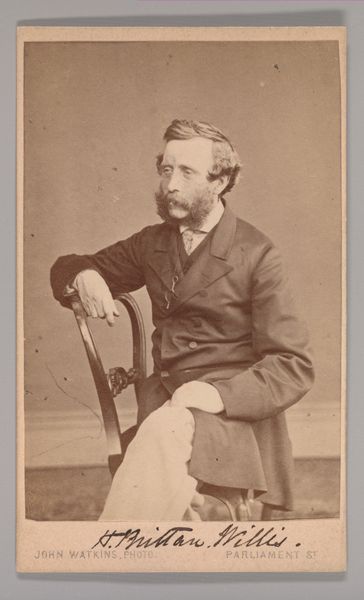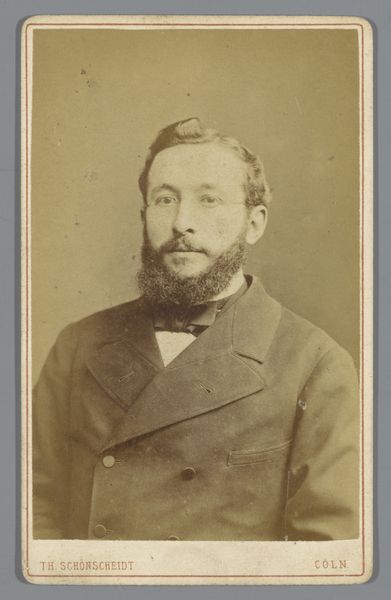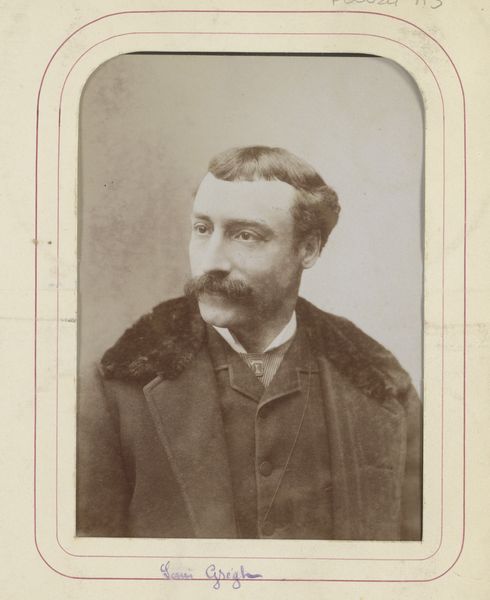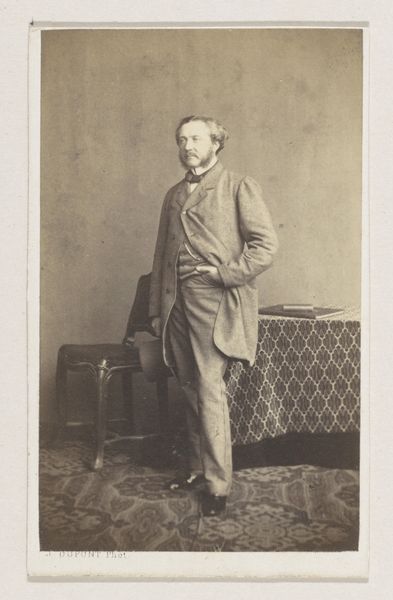
photography, albumen-print
#
portrait
#
photography
#
albumen-print
#
realism
#
monochrome
Dimensions: height 100 mm, width 60 mm
Copyright: Rijks Museum: Open Domain
Editor: Here we have Joseph Dupont's "Portret van de schilder Erin Corr, halffiguur," created in 1861 using an albumen print. It's interesting to see a portrait of a painter captured through photography rather than paint. I'm struck by the contrast between the detail achieved with this medium and the very formal presentation of the subject. What do you see in this piece? Curator: Looking at this image as a materialist, I find myself less concerned with the sitter, Erin Corr, and more intrigued by the production of the image itself. Consider the process: an albumen print. Think about the labor involved in preparing the paper, coating it with egg whites, sensitizing it, exposing it, developing it. This wasn't a point-and-shoot affair. Photography here is industrial labor, requiring an intense manipulation of materials. Editor: That’s fascinating. It really shifts how I view the photograph. It’s not just capturing an image, but also a very involved process. Curator: Precisely! And consider the social context. Photography was becoming increasingly accessible, challenging the established hierarchy of painting. This portrait signifies a democratisation of image production. Dupont, through the means of production he engages with, offers us a glimpse into the evolving artistic landscape. Editor: I see your point about the process mirroring the shifting artistic landscape of the time. I guess I was focused too much on the portrait aspect, rather than the act of photographic production itself. Curator: What initially drew you to it? Was it Corr's posture, perhaps? Editor: Perhaps subconsciously, but now that you bring it to my attention, it probably has to do with the tension that emerges by depicting an artist using a newly established means. Curator: That's excellent! So, thinking about photography less as pure representation, and more as an object of labor embedded in a particular social and technological moment, changes how you understand its cultural value. Editor: Definitely. I'll certainly look at photographs – and all art – with a more critical eye toward their production moving forward!
Comments
No comments
Be the first to comment and join the conversation on the ultimate creative platform.
